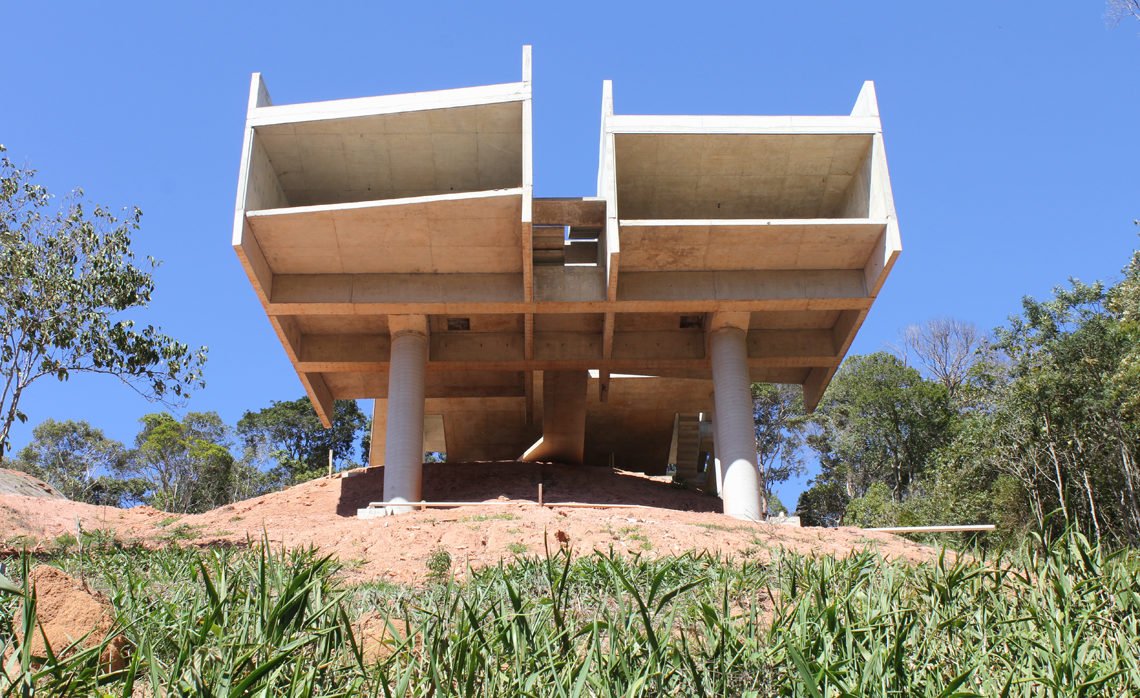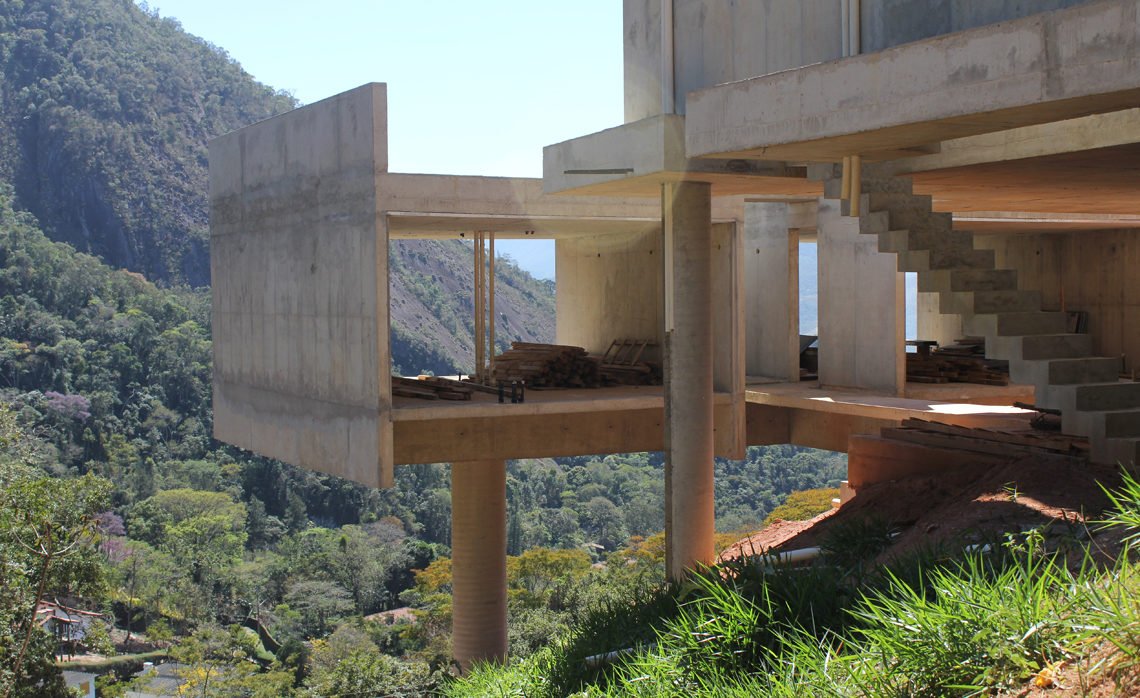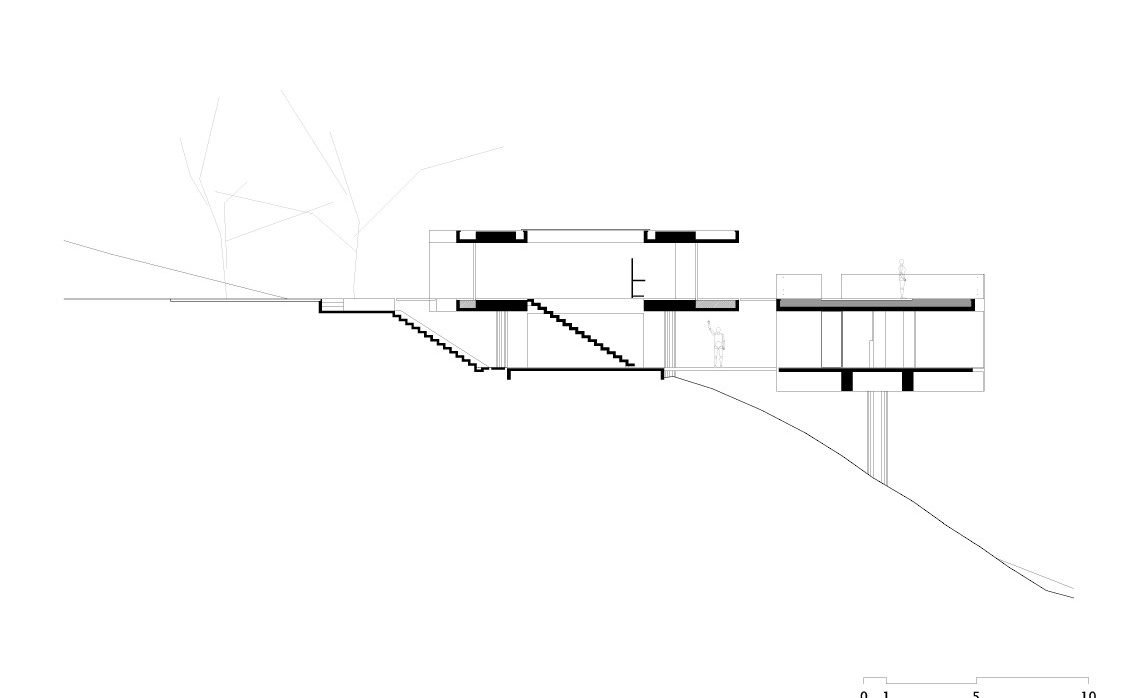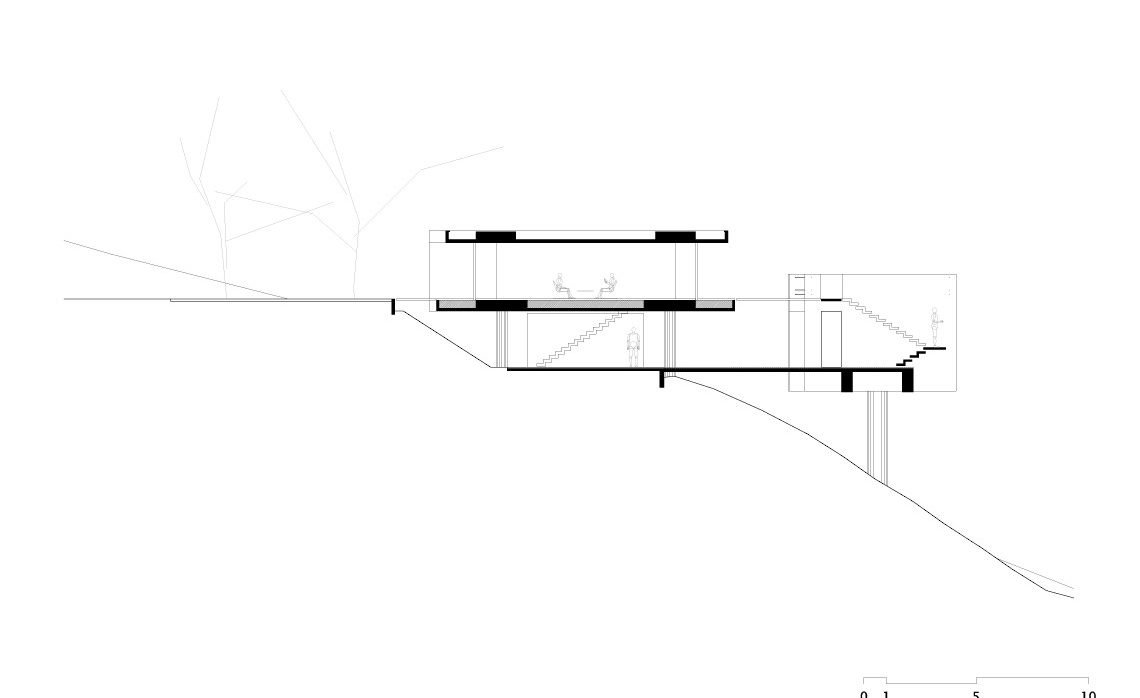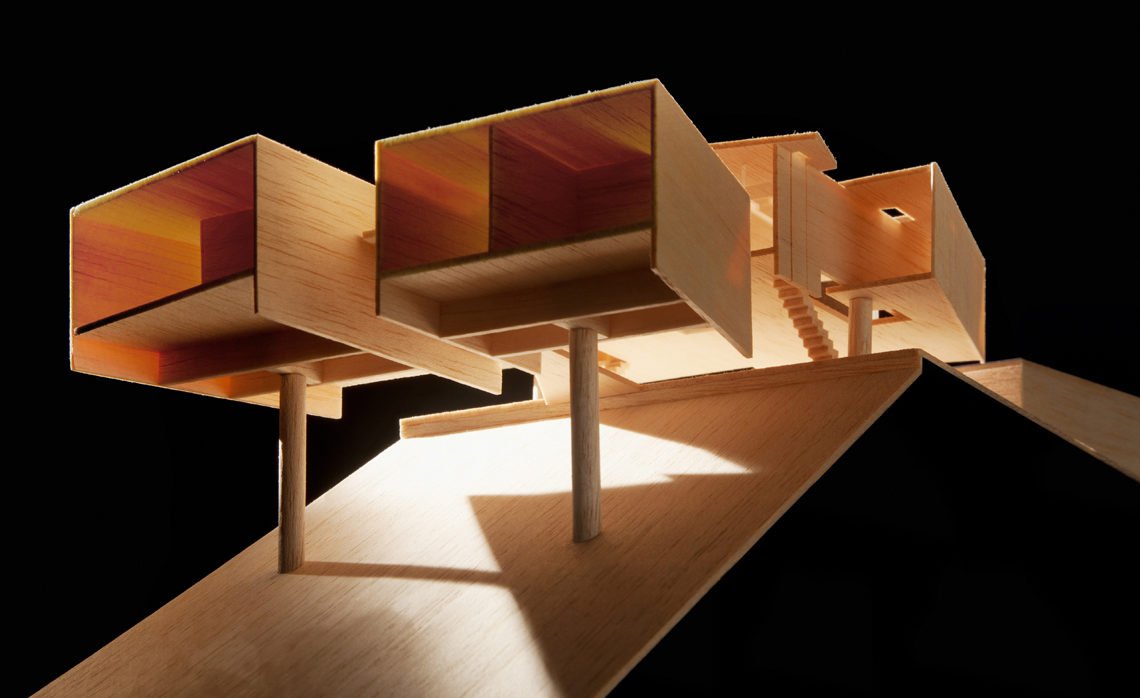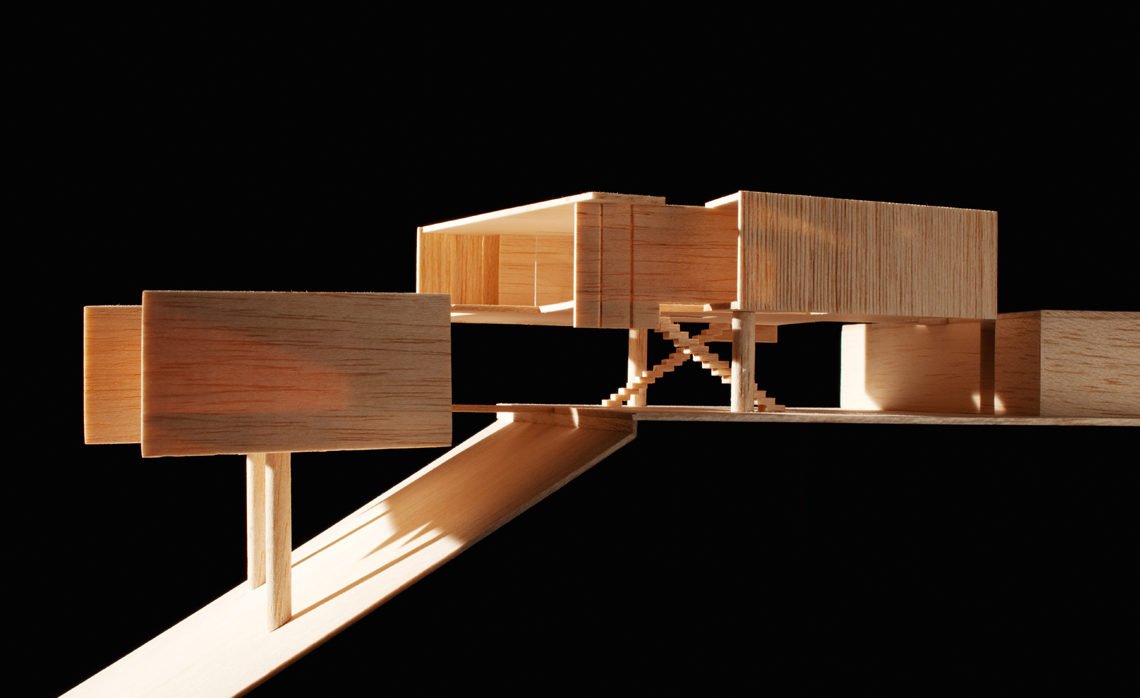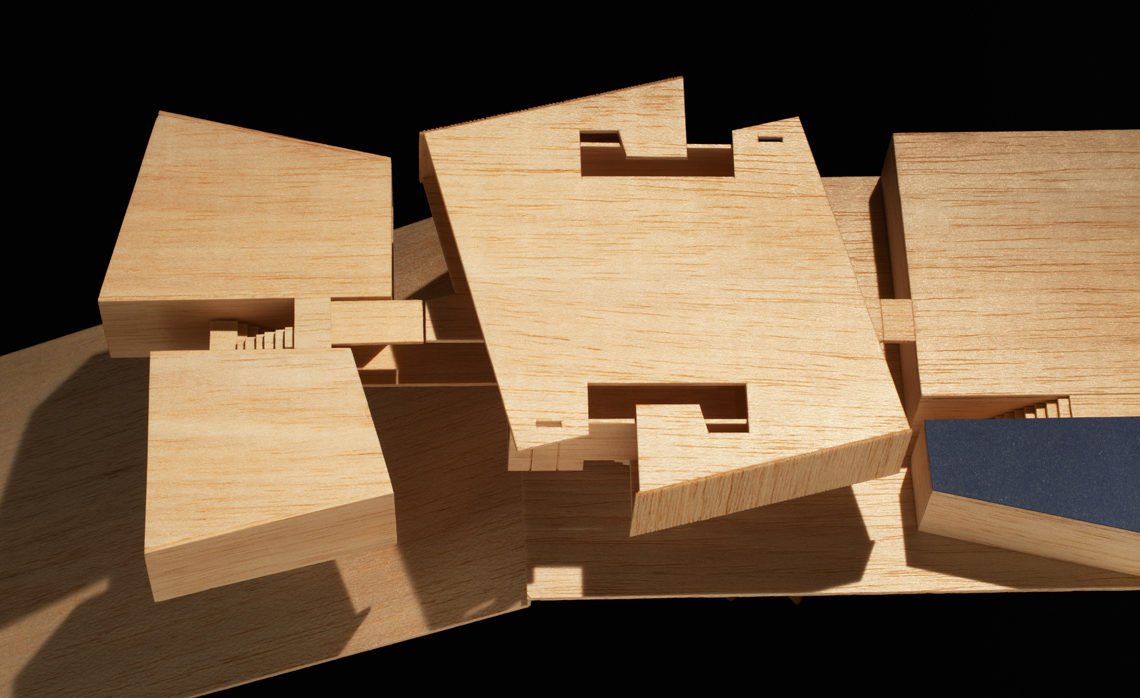Casa em Itaipava
Ciro Miguel
Eric Ennser
Juliana Braga
Tatiana Ozzetti
Nilton Suenaga
ESTRUTURA
Jorge Zaven Kurkdjian
ÁREA DO TERRENO
1.920,00 m²
ÁREA CONSTRUÍDA
354,51 m²
FOTOS
João Sodré e Juliana Braga
FOTOS MAQUETE
Nelson Kon
LOCATION
Itaipava is located on the hills close to Petropolis, 80 km toward north from Rio de Janeiro. The climatic condition made that region a traditional vacation refuge highly contrasting with the climate and the metropolitan atmosphere of Rio de Janeiro.
SITE
The site is 25m wide and 80m long, with a 2,000m² area, on the north face of a hill with a 41% slope, going up from the street in its longitudinal axis.
As the site had been prepared by the former owner to receive a house some years ago, it had already built two plateaus — 23m and 26m above the street level — and a 28% ramp for car access. All trees had been removed although that house has never been built.
TOPOGRAPHY REMAINS
Our first strategy aimed to avoid any changing in the existing topography and to prevent from soil movement or retain walls. Thus the proposed project appropriates existing car ramp and plateaus: that upper one was taken as an “arrival plaza” whose level defined the living space; that lower one was taken as an outside extension for the bedroom spaces.
THREE VOLUMES
The program of the house was accommodated in three volumes.
The first of them, as a core, is the living space. It is a 10 x 10 room, completely open to the south, the entrance, and toward north, to breathtaking view. The east and west sides are defined by two concrete walls, actually two beams resting in two columns each. These walls support both floor and roof slabs. A second square, slightly rotate in relationship with the first one in order to be perfectly oriented to the cardinal axes, measuring 12.5m side surrounding the first one in order to provide verandas and to shade to the inner square.
Two more volumes, completely detached from the first and from each other, make the intimate area. Precisely one is the main bedroom and the other volume contains two guest bedrooms. Each one of them rests in one single column topped by a horizontal frame which holds a pair of concrete walls. The structural scheme for these two volumes are identical, both are structurally associate, as bracing each other.
Bedrooms were displayed one level below the living room level.
The 1,5m wide gap in between these two them has received an outside staircase.
OPEN SPACE IS ALSO IN BETWEEN
There is a circular path connecting the three volumes and both levels. This path always crosses outside spaces, it is always possible to have a roofed way to go from one to other piece. The detachment among these three volumes makes each one an independent piece also for temperature control. Thus energy consumption for heating or cooling is significantly reduced, once it can works exclusively in that piece which demand it according to specific times or periods. For instance, if guest bedrooms are empty it doesn’t spend any energy, the same works to the main bedroom; or during the night temperature control in the living room can be released and vice-versa.
FROM WEEKEND TO EVERYDAY
This house was designed to be a weekend house, however in the future it could become more and more a house to live.
PUBLICAÇÕES:
Periódicos
SPBR ARQUITETOS – HOUSE IN ITAIPAVA
ga houses / japão n 125 / 2012
